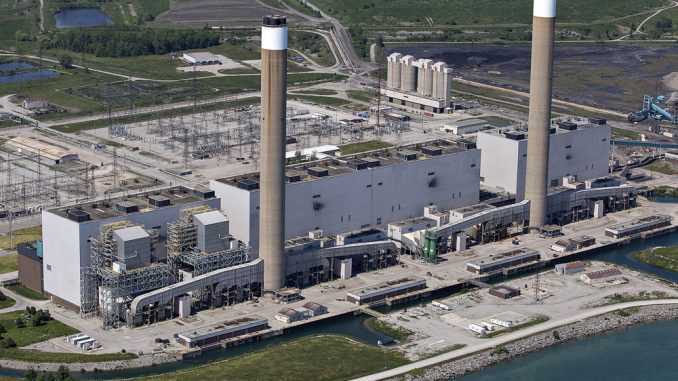
The Nanticoke generating station, in Ontario on the shoreline of Lake Erie, was built in 1973 and at one time was the largest coal-fired power generating station in North America. The station, operated by Ontario Power Generation stopped using coal as fuel in 2013, and the station was later closed. Plans are in the works to establish a 40-megawatt solar farm at the site.
By Mark Milke
Europe has become a continent where families are often asked to pay exorbitant amounts for basic needs, including energy. That has led to what is known as “energy poverty.” Many are not able to afford household power bills, especially in winter but also during summer heat waves.
The number of Europeans affected by this problem is high. According to the European Union in its 2015 report on rising energy costs, fully 11 per cent of its member states’ population — that’s 54 million people — already cannot afford their energy bills. The EU further estimates that fully one-quarter of residents, or 128 million people (and that includes the existing 54 million), are at risk of being energy poor.
Romania’s energy poverty, for example, clocks in at between 40 and 50 per cent of the population. Spain, Portugal, Estonia, Belgium, Malta, Slovakia, Italy, Ireland and even the United Kingdom record energy-poverty rates of between 20 and 30 per cent of their populations.
Such energy-poverty rates have led to what the EU references as “excessive mortality rates” in some of the same countries during winter, when some consumers cannot afford to properly heat their homes. Seventeen of 26 EU member states find the problem so prevalent that they even have energy poverty defined as an explicit concept in law.
Energy poverty
The EU blames energy poverty on three factors: the effect of recessions on incomes (it references the 2008/09 recession though some EU states have been in a recessionary “funk” long past that year); energy-inefficient homes; and rising energy prices.
Of the three, one is less amenable to further change: energy efficiency. That’s because European homes, apartments and townhouses are already very energy efficient vis-à-vis North American housing.
As for recessions and incomes, higher energy prices prevent European economies from achieving higher economic growth given that expensive energy restricts the money available for business investment. That slows overall economic growth, which exacerbates existing sluggish economies and lower incomes.
Oddly, in its 2015 study, the EU ignored one major factor in energy poverty: Its own role in killing off affordable power in attempts to meet ambitious carbon dioxide reduction goals in the 1992 Kyoto Protocol. Such objectives have been a staple of both EU and member-state policies’ ever since.
For a good example of how government policy led to the creation of energy poverty and then subsequent policy attempts to deal with the government-created problem, consider the U.K.
In the U.K., energy poverty is defined as a household where more than 10 per cent of income must be spent to heat the home to maintain an acceptable temperature. One-quarter of British households fit that definition.
PUSHING OUT COAL
Who’s to blame? In Britain, successive governments pushed out cheaper energy sources such as coal. The country was the first to commit to phasing out coal-fired electricity. Also, as of 2015, Secretary of State for Energy and Climate Change Amber Rudd made it clear that push would continue with plans to end all coal-fired power production by 2025.
Problem: As of 2015, coal-fired electricity in the U.K. still accounted for 20 per cent of all power. Also, the 2025 plan is not realistic without large costs. The Institution of Mechanical Engineers estimated that the country lacks the time, resources and enough people with the right skills to build enough replacement natural gas and nuclear plants by 2025. In any event, these touted replacements and the others, such as wind and solar, are more expensive. So is imported power from the continent. U.K. energy poverty is set to rise without a government U-turn.
Canada has its own examples of how forced transitions from cheaper energy sources to costly renewables sent power prices soaring — Ontario, where power rates have doubled in the past decade, being the most notable example. If Canadian governments adopt EU-style policies, Canadians can expect an increase in home-grown energy poverty.


